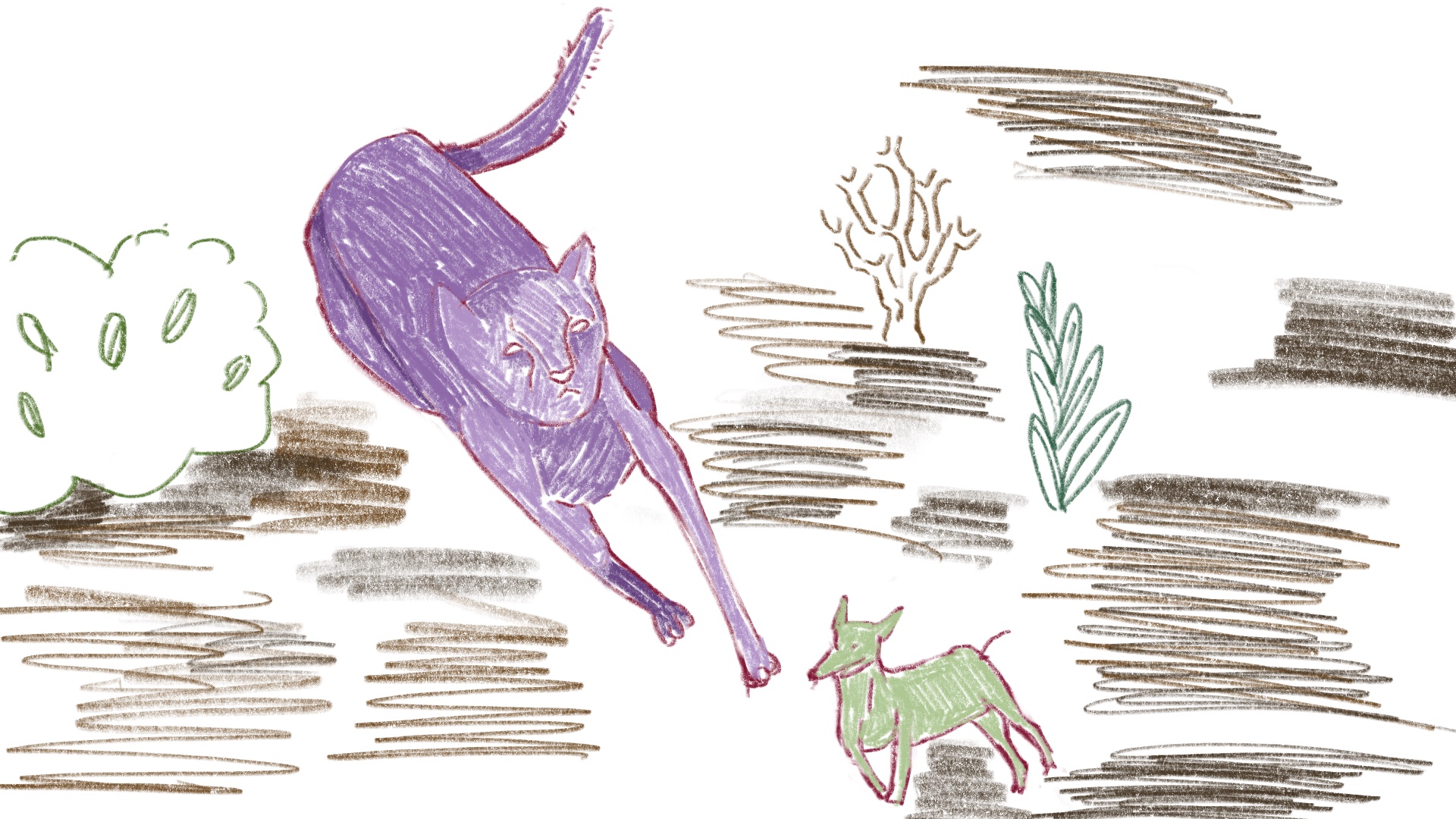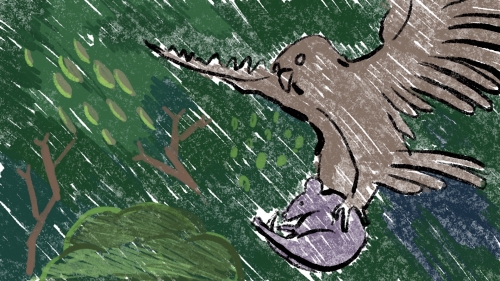
This work examines idea of evolution and time. In the class, we learnt mutable factors about time that it can speed up, slow down, loop, freeze and skip, and therefore effects the pace and space of narratives.
I am using the following precise, ’ The predictor chases after its prey. Everytime the predictor is going to get the prey or the prey is going to escape, they evolve and develop into another specie, and maintain a dynamic state.’ The story uses evolution to imply the existence of time. What seems to be a blink of an eye in the work is actually compressed for a million year evolution in an instant, and the viewers can see the rapid changes on the predator and the prey. The emphasis is on the movement and the time happened on two characters, so the story is very simple that there are no much cuts and dialogue in this piece.
This story is going to sit in the field of 2D animation. The transformation in 2D animation is a good way to promote the development of the plots. The preditor and the prey keep changing their forms and evolved into different creatures. Not only the time of evolution, but their movements also include time as well. As they speed up, or slow down, their relative velocity relationships also reveal the effects of time. The fast and slow presentation gives a sense of dramatic tension.
This work is related to the week9 watching resources " Satoshi Kon - Editing Space & Time" by
Every Frame a Painting ". The video mentioned 3 types of scene transitions in Slaughterhouse-5, ‘a general match cut’,’ an exact graphic’ match and’ intercutting two different time periods’. I am going to use a lot of general ‘match cut’ to depict actions between two character’s movement, and also intercutting two different time periods to draw their process of evolution.
By examining " Satoshi Kon - Editing Space & Time" , I reflected that time can be used in various way such as speed up, slow down or even affect status of objects to create dramatic outcome. Time can be used both as a theme or technique in my project. The former helps to record the status of single object in different time, and the latter helps to assist performance of movement.
About This Work
By Ashley (Chun-Yu Chen)
Email Ashley (Chun-Yu Chen)
Published On: 17/05/2022

